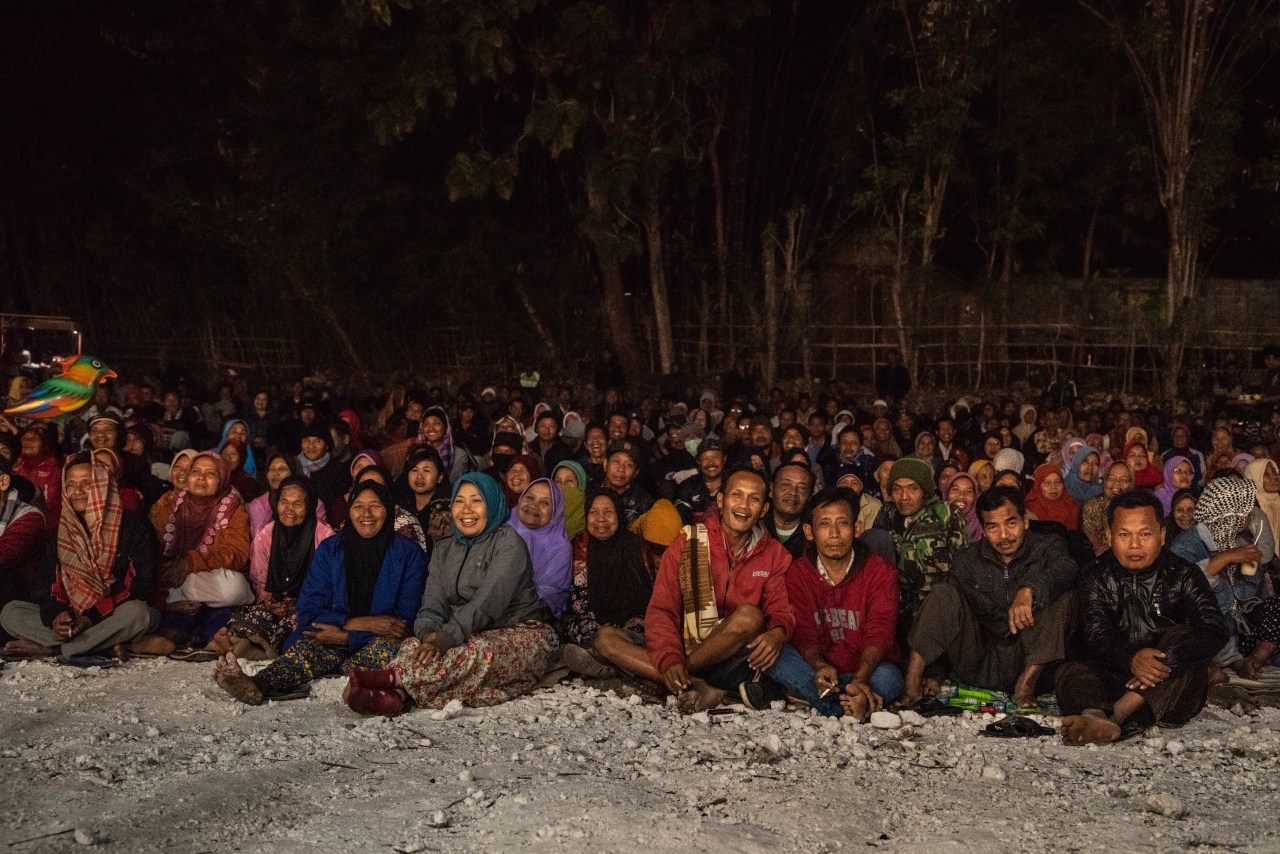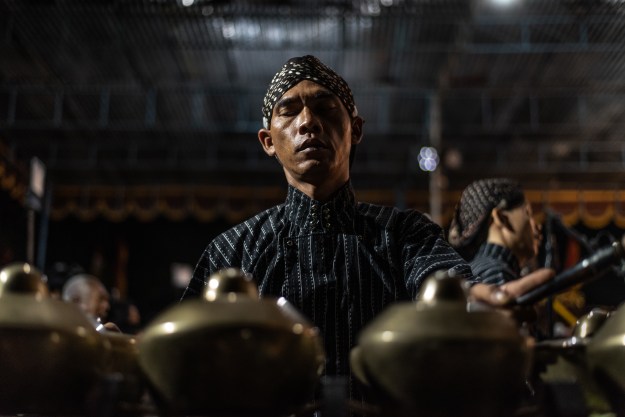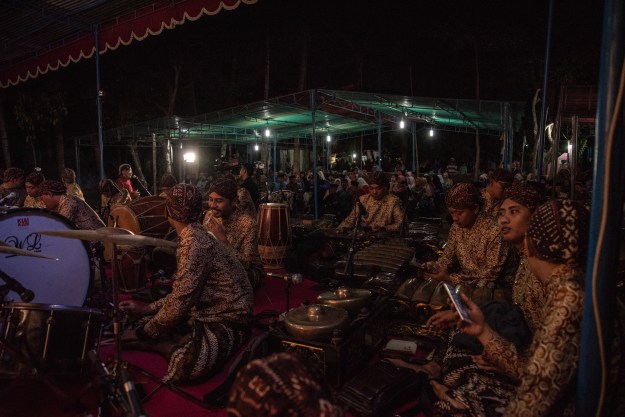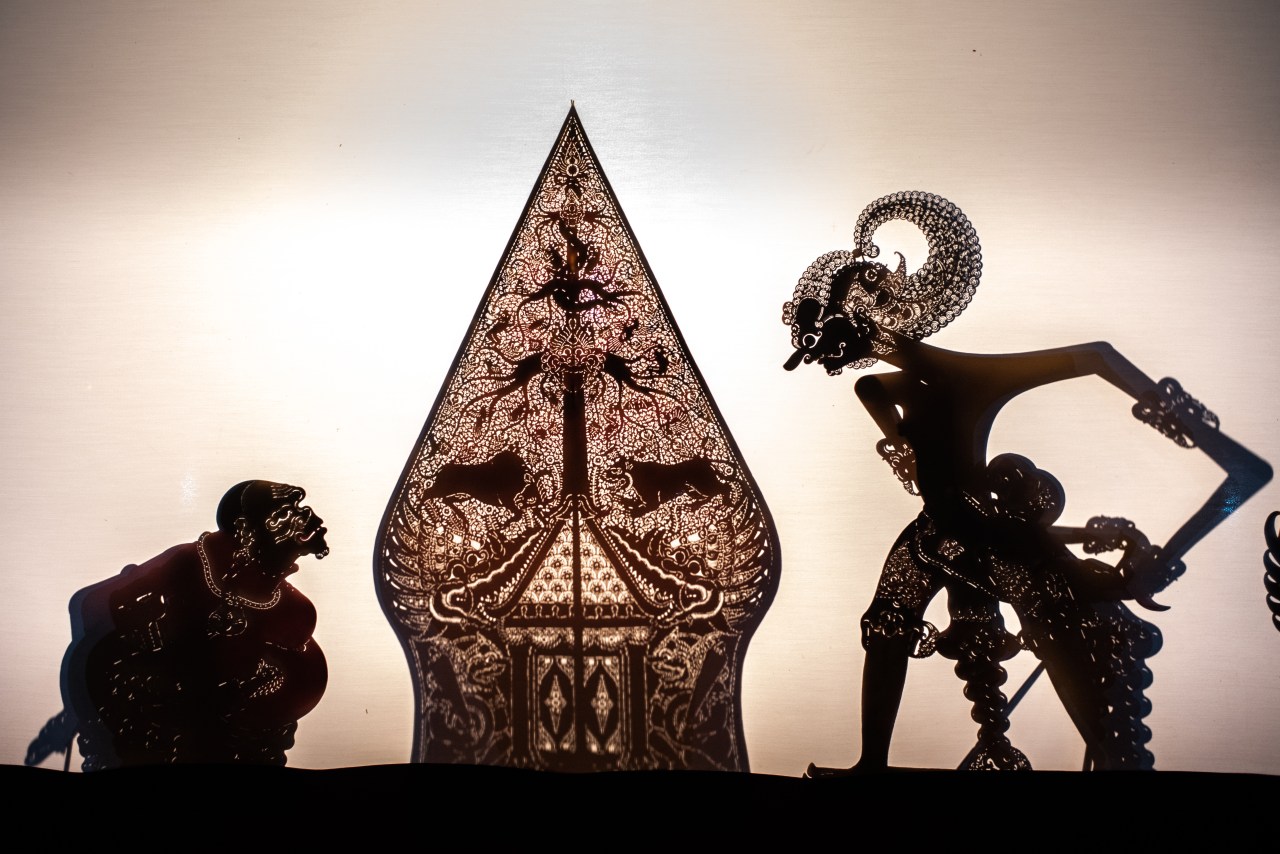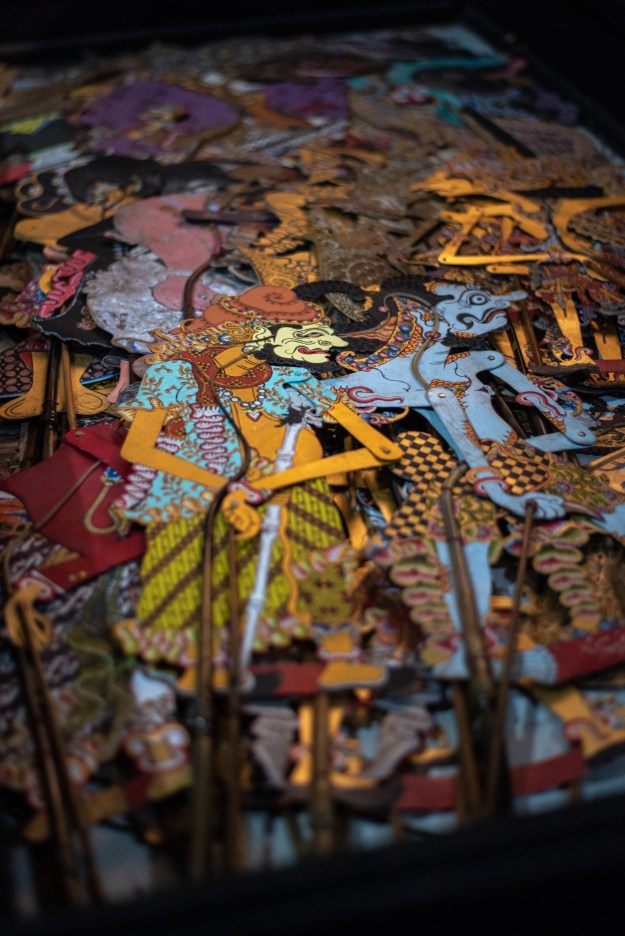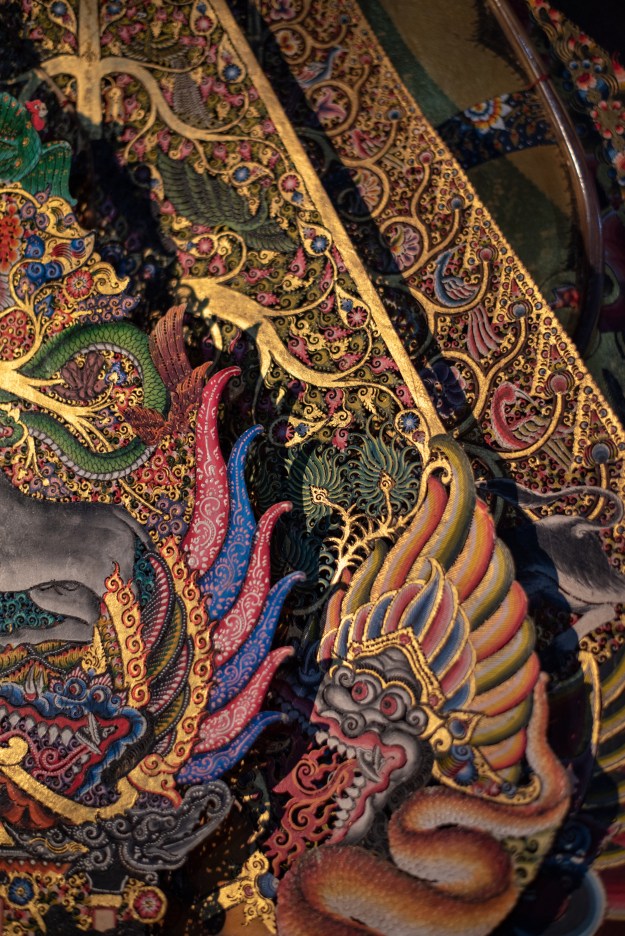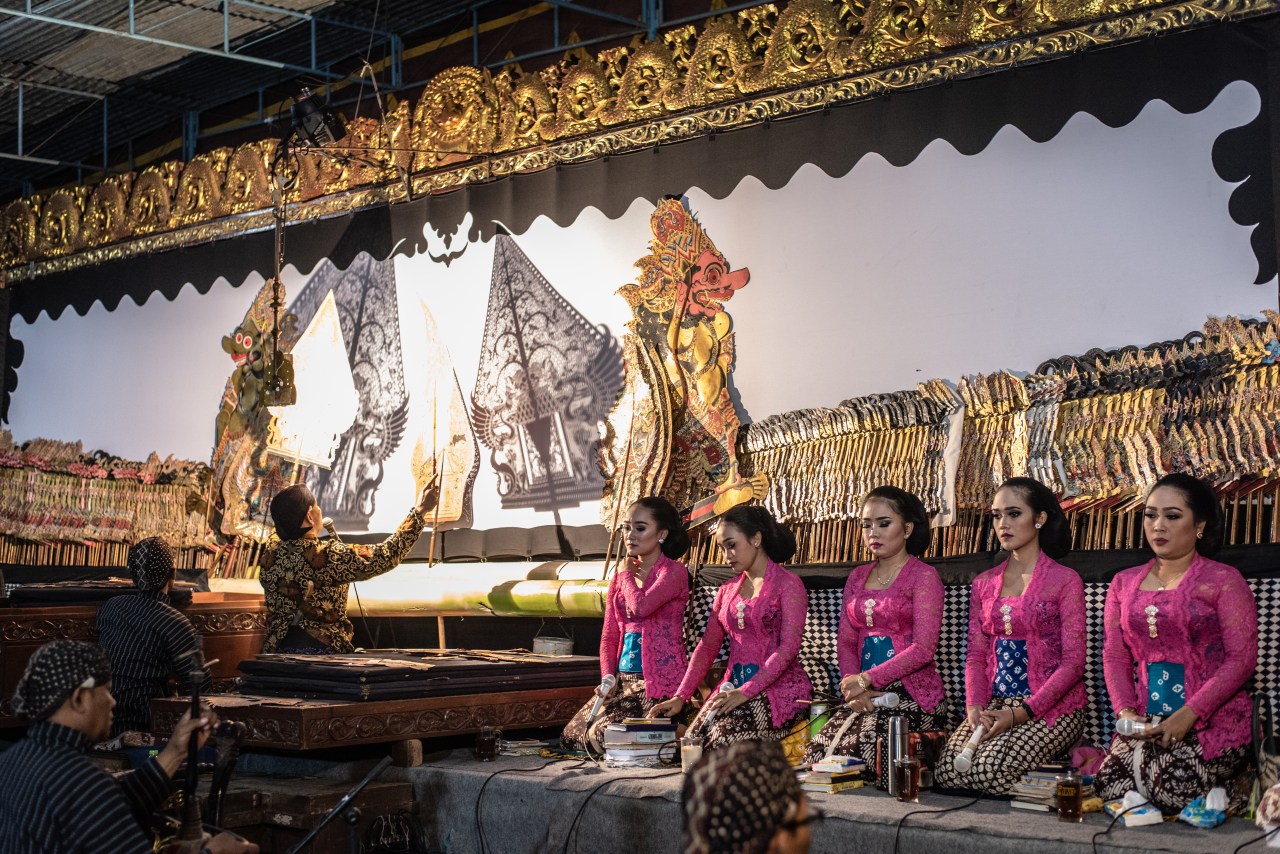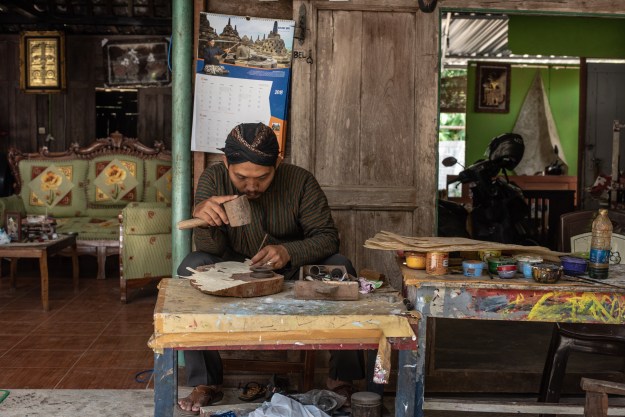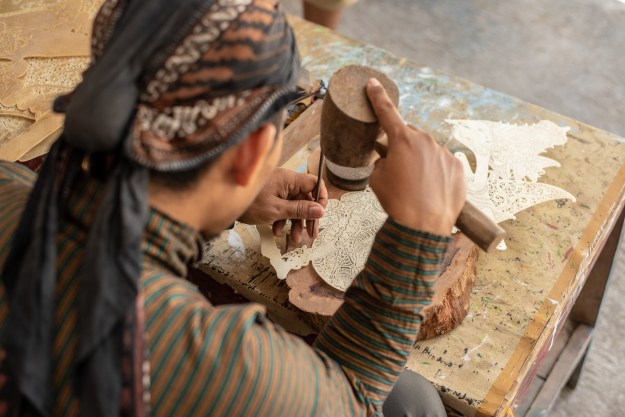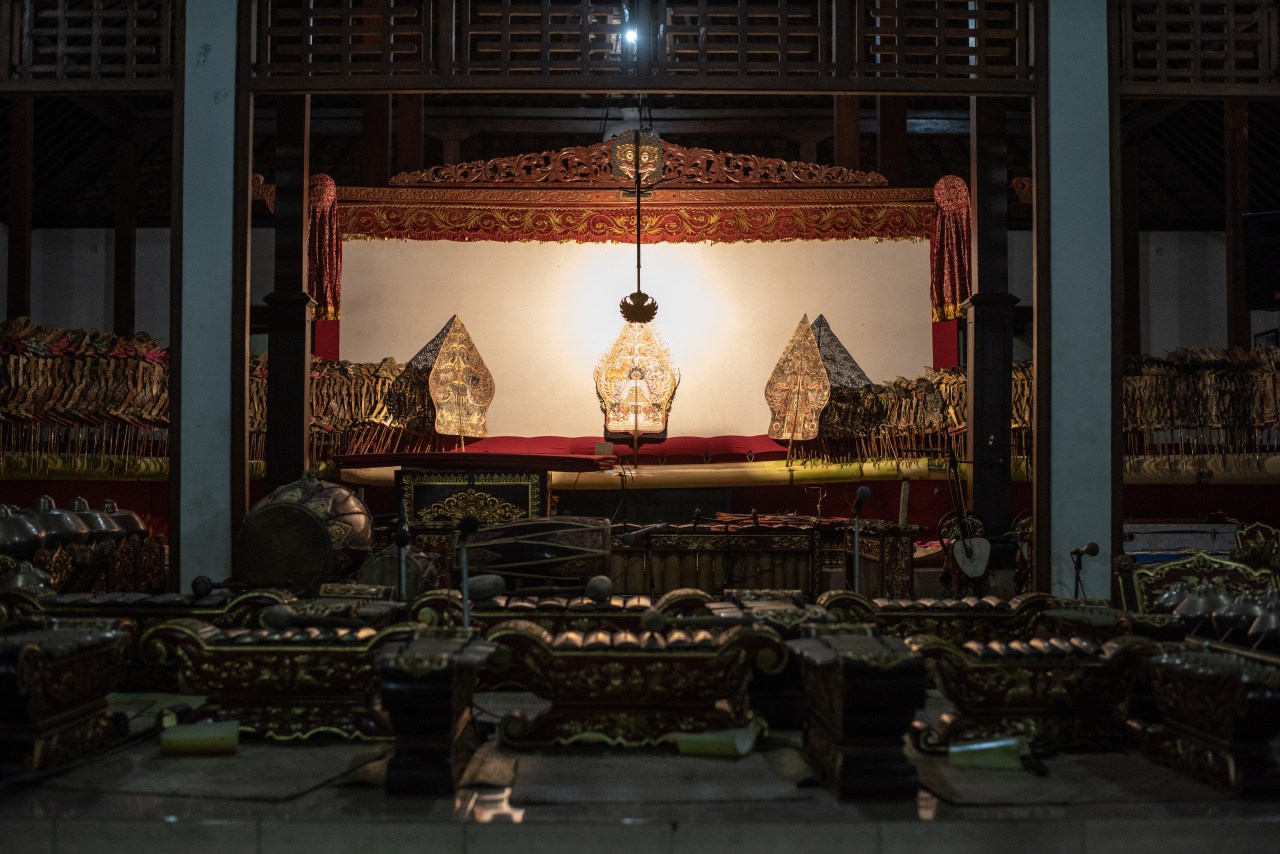Entire civilizations and religions are based on stories—tales of good and evil, of gods and men, of creation and death that have been passed from generation to generation.
On the island of Java there is a sacred form of theater known as the wayang kulit. Using flat yet intricate leather puppets, puppeteers known as dalangs bring two-dimensional shadows to life. The nighttime performances, which traditionally last from dusk to dawn, are accompanied by an orchestra of gamelan performers and a chorus of singers. The stories incorporate elements of Islam, Hinduism, and Kejawen, an ancient indigenous religion.
Wayang kulit is central to Javanese culture, especially in the city of Yogyakarta, aptly known as the City of Art. There you see depictions of wayang kulit in the architecture, in murals, and in marketplace souvenirs. It is art and industry. Entire village economies center on crafting shadow puppets and the gamelan instruments used in these performances. Generation upon generation pass down knowledge of the craft, just as the generations pass down the stories the puppet shadows act out.
Ki Seno Nugroho, a renowned dalang who lives in Yogyakarta, performs the wayang kulit nearly every night throughout central Java. Like most dalangs, he injects his own fervor and personality into the performances, improvising with the crowd and cracking jokes with his bandmates. He says this more engaging style of the wayang kulit started in the mid-1990s, when dalangs began allowing the crowd to sit on the same side of the stage as the dalang. Traditionally, audiences sit in front of the screen, keeping the dalangs outside of view.
The continual shift in the format has inspired a new generation of dalangs seeking to keep the art alive. Ki Kasidi Hadi Prayitno, son of the legendary dalang Ki Timbul Hadi Prayitno, teaches shadow puppetry at the Indonesian Institute of the Arts in Yogyakarta. He says there has been a steady increase in students over the last few years, including a recent rise in female dalangs. This spirit of constant rebirth is one of the key messages of the wayang kulit. The art adapts even as it preserves the core narratives it was founded upon.
